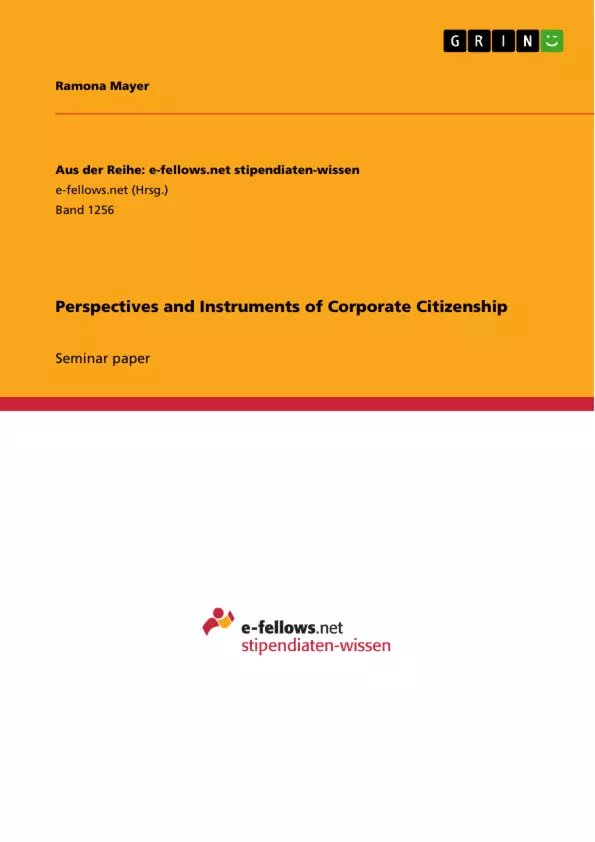In recent years, the term Corporate Citizenship became more famous and was used as common vocabulary. However, there is quite a huge discussion and confusion about the term and no general definition exists.
Thus, this paper concentrates on the term ‘Corporate Citizenship’ and discusses the emergence of the terminology. It introduces different perspectives on how to define Corporate Citizenship, mainly the limited view, the equal view and the extended view of Corporate Citizenship. It also discusses and demonstrates some downsides and weaknesses of these perspectives. Additionally, the paper introduces the concept of Global Business Citizenship as contrast to the approaches previously explained.
To get a practical approach as well, the paper takes a closer look on how corporations can implement Corporate Citizenship by introducing several instruments. In order to top the understanding of Corporate Citizenship off, the paper finally focuses on the Top 100 Corporate Citizens judged by the CR Magazine.
It looks at the different categories and data elements of the Corporate Citizenship Lists Methodology in order to broaden the knowledge about the different parts of Corporate Citizenship and to get a better understanding of what can be expected nowadays from firms.
Table of Contents
- History and Development of the Terminology
- Different Perspectives on Corporate Citizenship
- Limited view of CC
- Weaknesses of the limited view of CC
- Equivalent View of CC
- Weaknesses of the equivalent view of CC
- Extended view of CC
- Strengths and Weaknesses of the extended view of CC
- Global Business Citizenship
- Limited view of CC
- Instruments of CC
- CC today
Objectives and Key Themes
This paper aims to provide an in-depth understanding of the concept of Corporate Citizenship by analyzing its historical development, different perspectives, and practical applications. It also explores the emergence of Global Business Citizenship and its implications for companies.
- The historical development and changing definitions of Corporate Citizenship.
- Different perspectives on Corporate Citizenship, including the limited, equivalent, and extended views.
- The strengths and weaknesses of each perspective on Corporate Citizenship.
- The concept of Global Business Citizenship and its relationship to traditional Corporate Citizenship.
- Practical instruments and strategies for corporations to implement Corporate Citizenship.
Chapter Summaries
Chapter 1 delves into the history of the term "Corporate Citizenship" and its increasing prominence, particularly in the wake of globalization and the rise of stakeholder expectations. It highlights the evolving understanding of Corporate Citizenship and the lack of a comprehensive theoretical framework. Chapter 2 explores three distinct perspectives on Corporate Citizenship: the limited view, the equivalent view, and the extended view. Each perspective is examined in detail, along with its inherent strengths and weaknesses. Chapter 3 focuses on practical instruments that corporations can utilize to implement Corporate Citizenship strategies.
Keywords
Corporate Citizenship, Global Business Citizenship, Corporate Social Responsibility, stakeholder engagement, globalization, ethical business practices, corporate governance, sustainability, business ethics.
- Citar trabajo
- Ramona Mayer (Autor), 2014, Perspectives and Instruments of Corporate Citizenship, Múnich, GRIN Verlag, https://www.grin.com/document/300285



